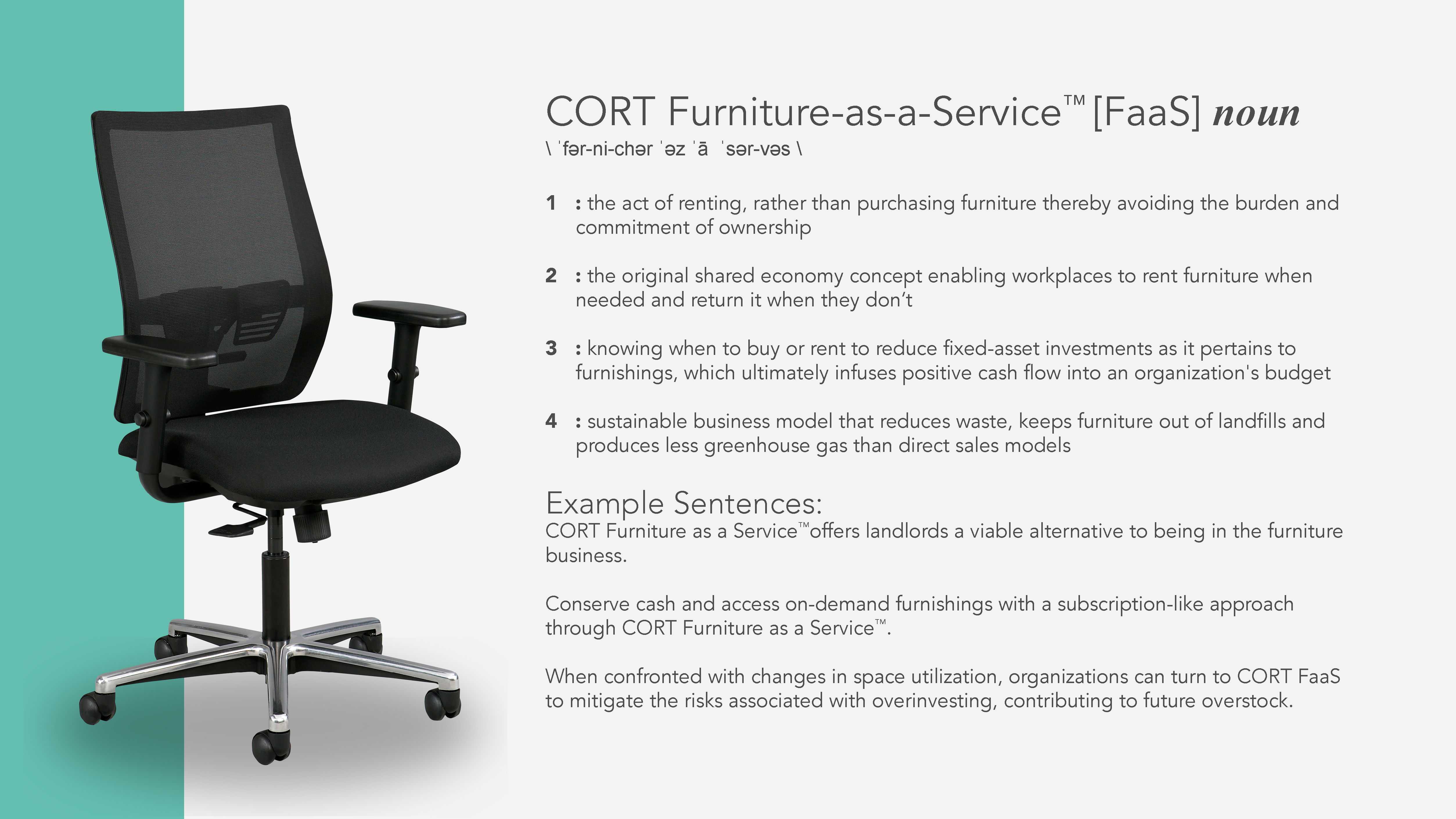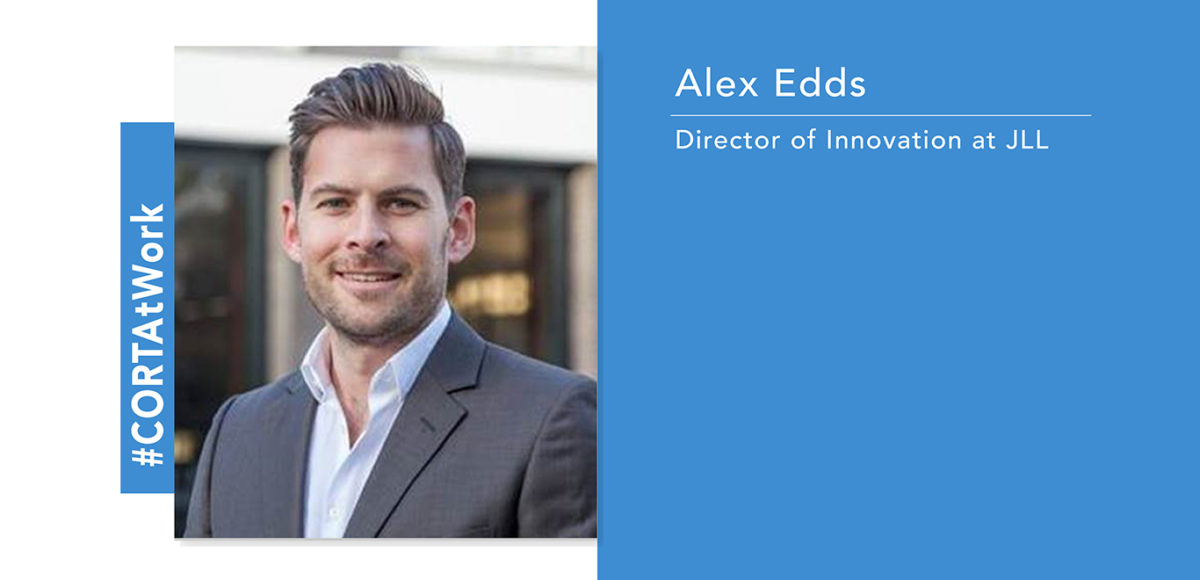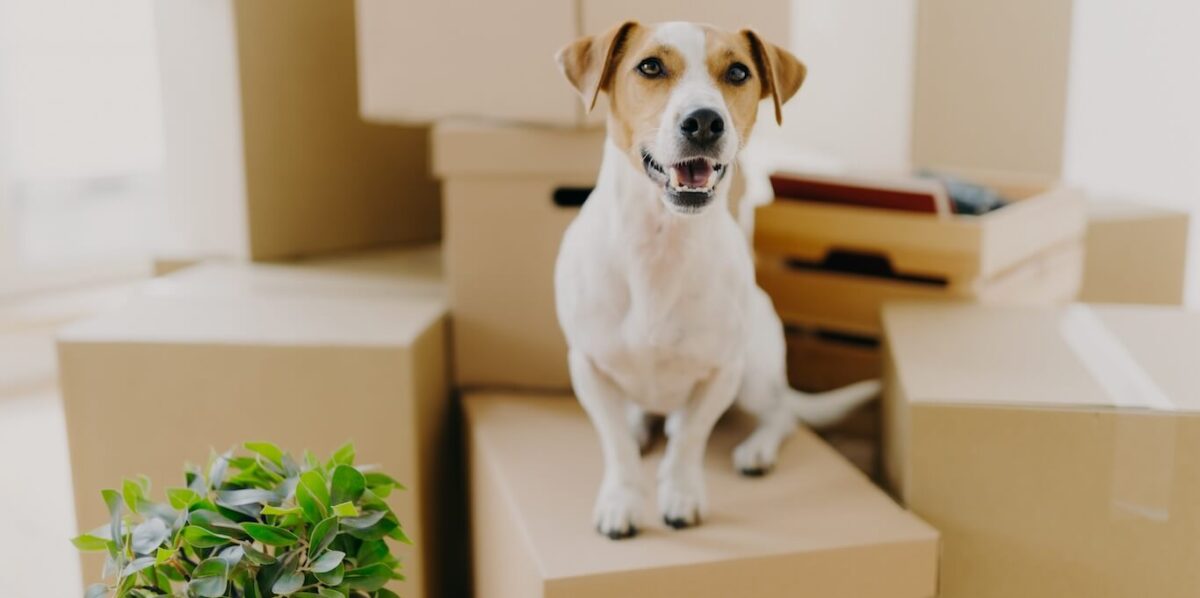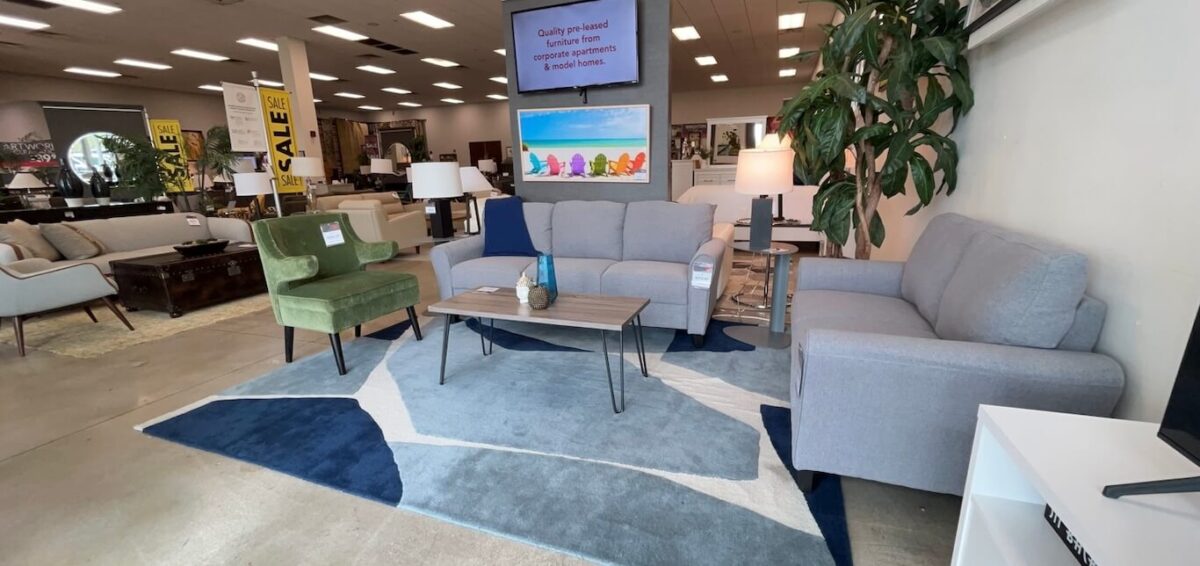This article is part of the “CORT Workplace Talk” series where Melanie Jones, CORT’s National Director, CRE Partnerships, sits down with thought leaders in commercial real estate to discuss advancements, insights, and trends within the industry. Sit back and learn more about CRE and how CORT Furniture Rental can benefit your organization.
Last week, I had the pleasure of sharing part one of my conversation with Alex Edds, Director of Innovation at JLL. Thank you so much for joining me again and now, here is part two of our discussion on sustainability and innovation within the Commercial Real Estate industry.
MJ: Let’s switch gears and chat about the other hat you wear – innovation. Innovation is often defined as the practical implementation of ideas that result in the introduction of new goods or services or improvement in offering goods or services.
Do you see enough innovation, as a result of research and development, in commercial real estate circles to help develop the new tools needed to propel progress?
AE: It’s a good question because innovation is one of those words that depending on who you ask, you’ll get a different definition. I think real estate itself is a very entrepreneurial industry, not necessarily innovative but entrepreneurial.
Frequently people spin up their own real estate companies and duplicate what they’ve done before, and generally have been very successful at doing so. But it’s a cookie-cutter approach, nothing really gets added to the process. This model isn’t going to get us where we need to go in terms of progress with carbon, GHG, etc. The industry has been plagued by a lack of investment because it hasn’t needed to. In all areas, really. From construction, design, furniture in your case, management, whatever.
Real estate is second only to agriculture in terms of levels of minimal investments into R&D. Technology firms typically invest between 10% to 12% of their annual revenue back into R&D. The construction industry invests about 1%. In real estate management (and caveat this by saying the numbers are very hard to compile) it’s about 0.1%!
The magnitude of difference between where real estate is and where these other industry leaders are is just phenomenal.
MJ: A bit disturbing considering the magnitude and impact buildings and real estate have on the planet and our lives, for that matter. Do you think we’ll see a quick ramp-up in dollars and talent over the next five to ten years?
AE: Good point because I think it’s easy to just look at this and say we need to spend more money. And, collectively, we do, but it is certainly not just about the money.
The structure of real estate currently makes it very difficult to innovate. It is a fragmented industry, long and complex supply chain, siloed professional bodies, no alignment on data or feedback around performance. The incentives are lacking, and it is difficult to justify the capital investment.
I see change happening slowly. Real estate is starting to recruit new skills and insights from outside the industry. This brings new perspectives and a more ‘product’ and customer focus. This, in turn, drives a different culture to think about value differently. Coupled with this, investment in technology is growing – both corporate technology functions but also in Venture Capital funds and into the burgeoning property technology (Proptech) sector.
We still have a long way to go, but there are some pioneers, and that is what we need to move forward.
MJ: Most days, I’m working to figure out innovative ways to forward our mission. I find it imperative to think differently to allow new ideas to percolate and materialize. It will take this type of disruption, from many of us, to create real change.
AE: True. I know many people feel WeWork was a failed experiment, but they came at space in a completely different way. Just like you are doing with a furniture subscription concept. WeWork is a great example of a company that came out of nowhere with a completely different platform and a completely different investment model. Completely different investors from outside real estate. And so, the real estate industry was taken by storm. Yes, they had some management problems and so forth, but a terrific example of innovation brought about by a very different way of thinking.
I think this is what we’ll see, outsiders coming in, especially if the existing commercial real estate industry doesn’t up its game. Quite simply because customers will demand a better product. If we don’t do it, someone else will.
MJ: So how critical is innovation supporting forwarding progress, for example, in sustainability in commercial real estate? Do you spend time researching and anticipating new technologies needed to achieve some of the ambitious goals being put in place?
AE: That goes with the job, yes. It was a bit easier five years ago as there were far less products and companies out there. Now there are hundreds, which is great. But it means that ‘innovation’ is no longer, or never was, just my job; it is the responsibility of everyone to spot new trends and ideas and have the courage and flexibility to try and test.
That means my role has to adapt. Initially, I was out there finding the companies and bringing them to the business. Often the business wasn’t ready. Colleagues liked it and were inspired, but the discussion went nowhere because we didn’t have the right structures and culture to support it.
I, therefore, spent more time with the business to better understand what we needed from tech. I went to work trying to better understand our priorities and needs.
So now, I feel well equipped to judge what is relevant and what isn’t, and make more direct and prosperous connections. It is working well, and we’re currently trialing or onboarding some really interesting technologies.
Of course, we now have our Spark fund – JLL’s own Corporate VC – which invests in early-stage PropTech. And more recently, we have created JLL Technologies, which builds and partners to deliver technology solutions to JLL and our clients. So my role also involves working closely with these teams.
MJ: JLL certainly is an innovative client of ours, and over the years, our team has supported the JLL Project teams and Corporate Solutions teams with a variety of solutions. Do you think the CORT Furniture-as-a-Service™ model belongs in the overarching sustainability conversation in commercial real estate?
AE: 100%! In fact, we are currently working on a fit-out of one of our new London offices and being guided by our corporate principles and adopting the principles of the circular economy.
Furniture is certainly a massive part of that. It’s crazy, really, that companies still buy desks and chairs and computers. Why do we buy them? We don’t need to. Our objective is to create a place for our people to be productive, and we should find the right partners to make that happen.
Everything really is becoming “As-A-Service.” Furniture-as-a-Service, Space-as-a-Service, IT-as-a-Service. This concept allows the collective “us” to have access to space, equipped and delivered via subscription models. It works on so many levels. It helps with sustainability, it helps with cash flow and reduces CAPEX from a business perspective. It allows someone like your team to maintain the product so others can scale, and gives CORT the necessary scale to amass a large inventory for many to use.
I think Furniture-as-a-Service provides real estate and the workplace with a new way to operate. Products can be used, reused, recycled, and thereby support positive outcomes in sustainability and the circular economy. It also provides a great deal of flexibility around the size and shape of the user’s needs and experience. So yes, this tool is an important part of the sustainability equation.

MJ: You are passionate about your mission. What do you see that gives us hope that by working together, we can create positive change?
AE: Honestly, I have days filled with hope, but other times, the mission feels heavy. I wish we’d started long ago. Do we have enough time? Are we able to make and sustain real change around our consumption of energy, our management of water and waste in buildings, construction, and our personal lives?
Concerning to me is the amount of change that we need to make in every sector, everything from the way that our financial system works, the way we build buildings, the way we consume products, etcetera.
And even with all the change occurring, the chart lines are still pointing in the wrong direction – we’re still generating more carbon, consuming more water, creating more waste. So that means we’re not doing enough. So we must take bold action quickly to reverse the damage done. It is simply critical.
Fortunately, the climate crisis (and associated environmental concerns) didn’t dissipate during COVID. Nevertheless, it remained a top concern, and in the run-up to COP26 I hope that this pace will further accelerate.
MJ: Driving change, in anything, relies on proper education and communication. Do you think the issues we are discussing today have a bit of a perception and communication problem?
AE: Yes, I do. Sustainability is often just lumped together with climate change, and climate change hasn’t been effectively communicated for the past twenty years. It’s been spun in many directions, many times at the mercy of various lobbyists.
Climate is one big topic, but we humans need to understand and address massive issues such as microplastics, the destruction of our oceans, hazards in our air quality, environmental toxins, and so on. Plastics are in our air, our food, our water, and I personally feel this is the most pressing issue at the moment for us as humans. The problem is the message is often too conceptual and big for people to grasp. We need to make it real and impactful in people’s lives. And the good thing is, all these things are interconnected, so if we improve one, we improve the other.
For example, suppose the messaging focused on local air quality and its impact on you and your children – at a local level – on the street where you live and work. Without improvements, it would likely result in a greater risk of bronchitis or allergies. In that case, the people are more likely to pay attention and more likely to change behaviors.
When the message is that global temperatures need to reduce by 1.5 degrees, it’s harder for many to truly understand what that truly means and how they can get involved and help.
MJ: I have a great example. We have been researching the environmental savings gained in using our circular solution vs. a traditional furniture purchase. If I say our model saves 368,862 tons of CO2 annually, that means little to most.
Sharing the equivalents, it’s much more relatable. A different picture comes to mind when I say 70,684 passenger vehicles are kept off the road for a year. Or the savings are equivalent to saving the annual household energy utilization for 35,335. Much more impactful, I think. We need to get better at telling a story that resonates.
I believe as more and more people and companies come together globally and work to communicate the true nature and magnitude of our challenges, we will continue to problem solve. It starts right here.
Alex, thank you so much for sharing your ideas on this critical topic. I know you and your team are available to answer questions and help steer any reader interested in weaving more sustainability and innovation into future planning. And, thank you for staying true to your vision and determination to create positive outcomes!
About Alex
Alex advises both JLL leadership and its clients on the technological and systemic disruption facing the property industry. He supports the development of new business, portfolio, and asset strategies that seek to embrace and capitalize on market opportunities as a consequence of digital transformation, specifically aimed at helping clients future proof portfolios and buildings for future market needs, and with a personal goal to embed sustainability into real estate decision making.
Prior to this role, Alex has served as Head of Sustainability at JLL, Head of Responsible Property Investment at Nuveen, and Director of Upstream Sustainability Services, JLL.
Alex takes pride in challenging the status quo and believes there is a huge opportunity to improve the built environment by fundamentally changing the way we design, build and manage physical spaces to better serve the people that use them and the environment upon which they depend.
About Melanie
Melanie Jones is responsible for educating, supporting, and building relationships with commercial real estate teams across the US in support of CORT’s Furniture-as-a-Service™ model. A mission-driven leader who brings the necessary energy and innovation to support change in the way furniture is utilized in buildings and the workplace.
Ready to work with CORT on a project like this?
Feel free to reach out to Greg Copeland, Director of Strategic Business Development and manager of the global relationship between JLL and CORT, for more information.






